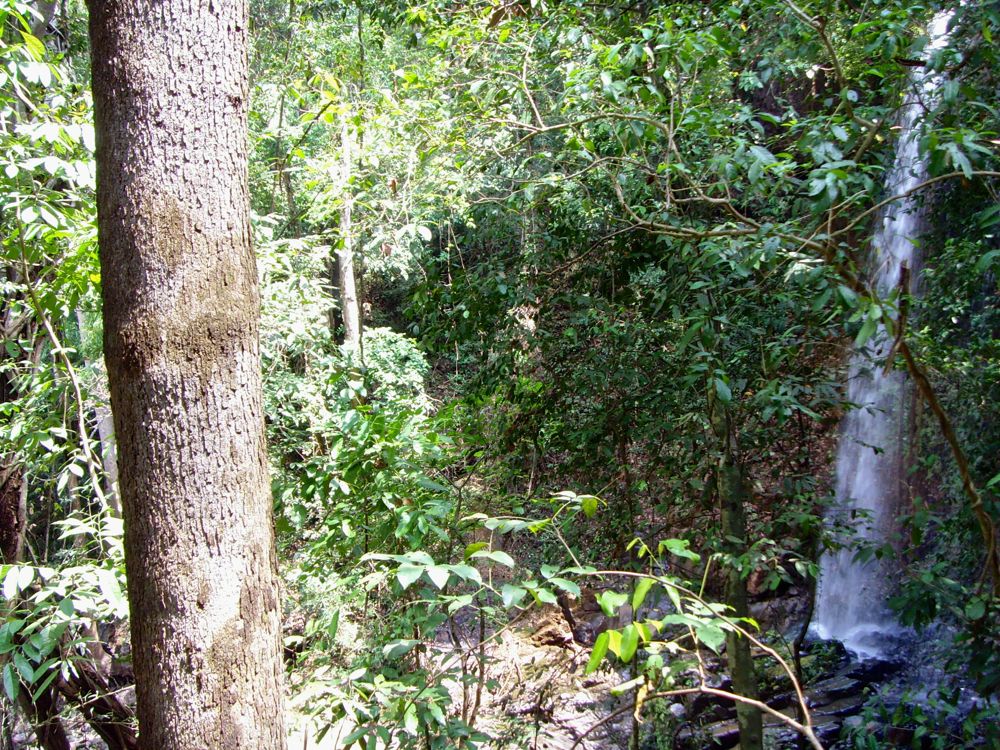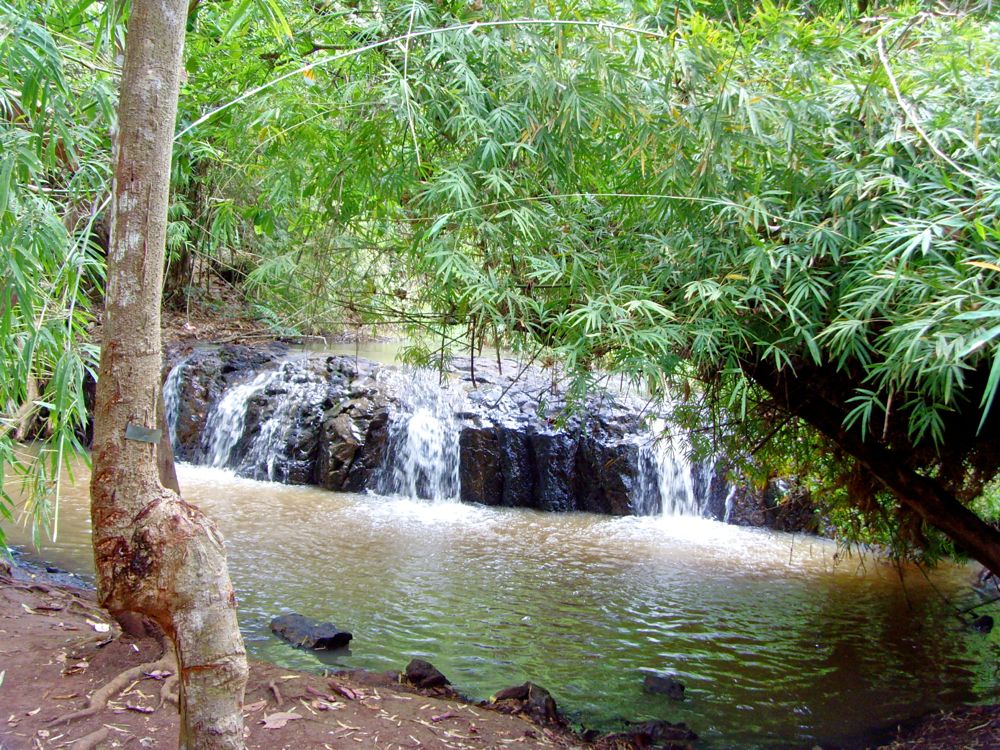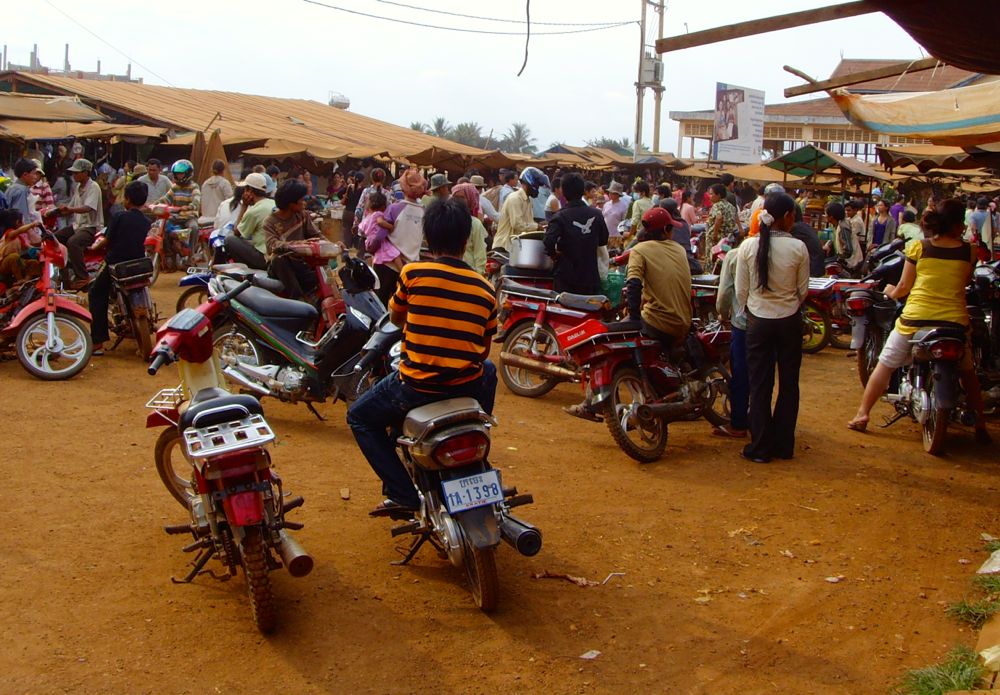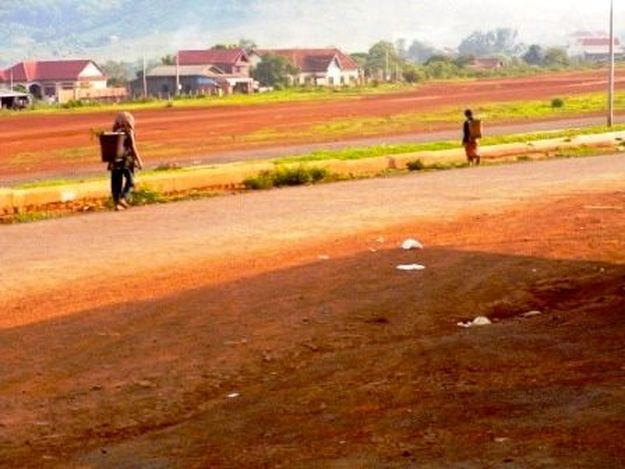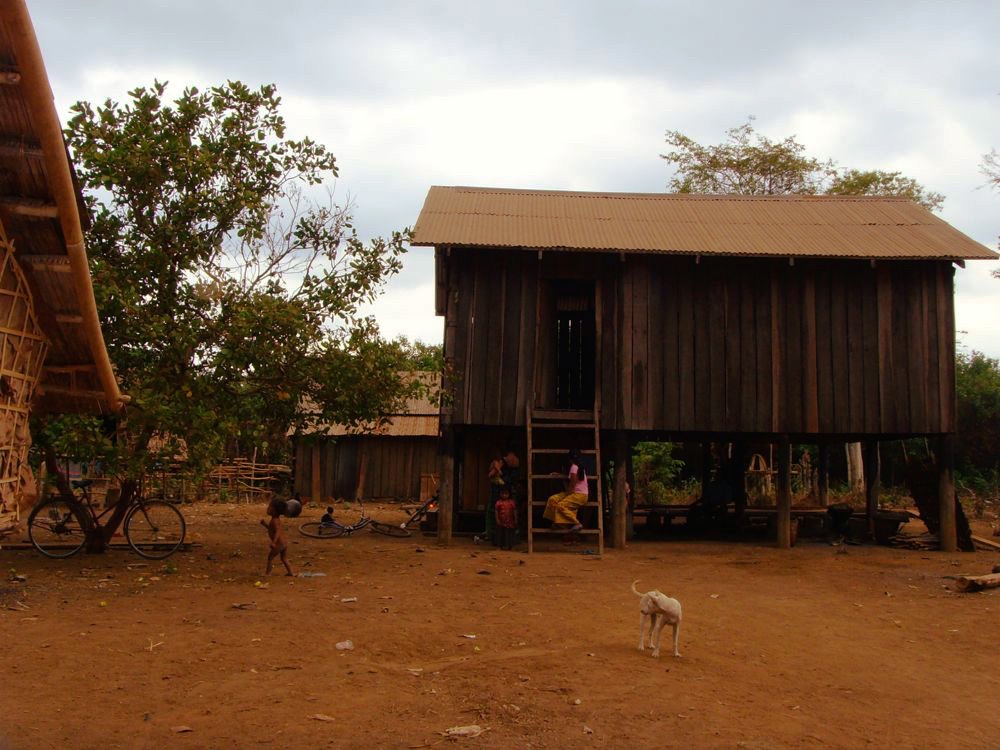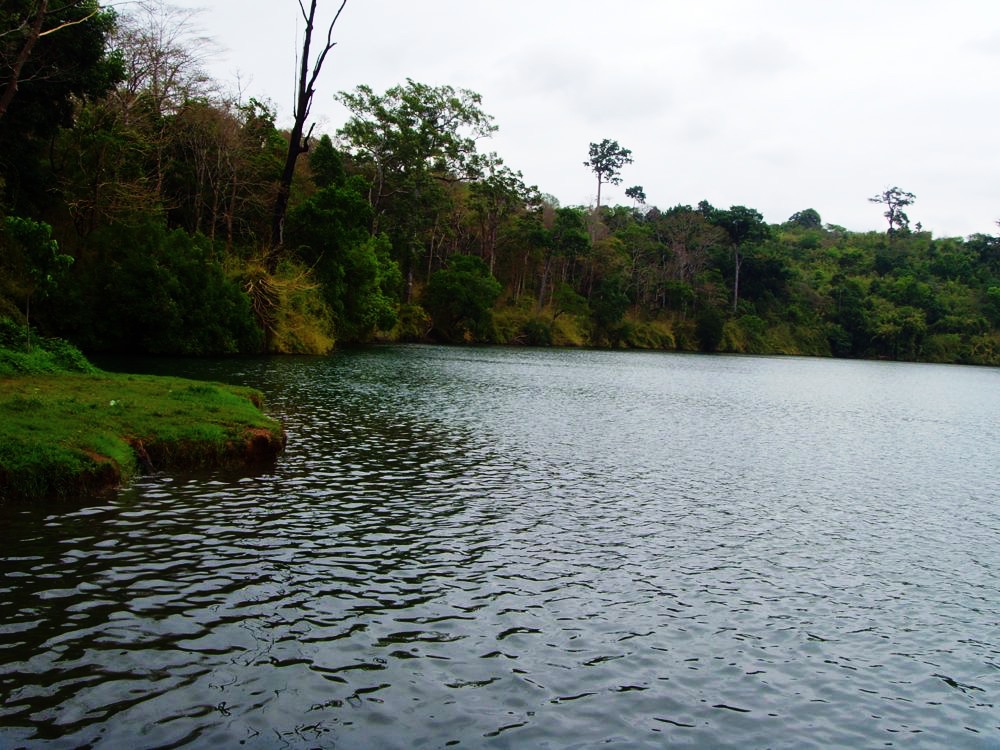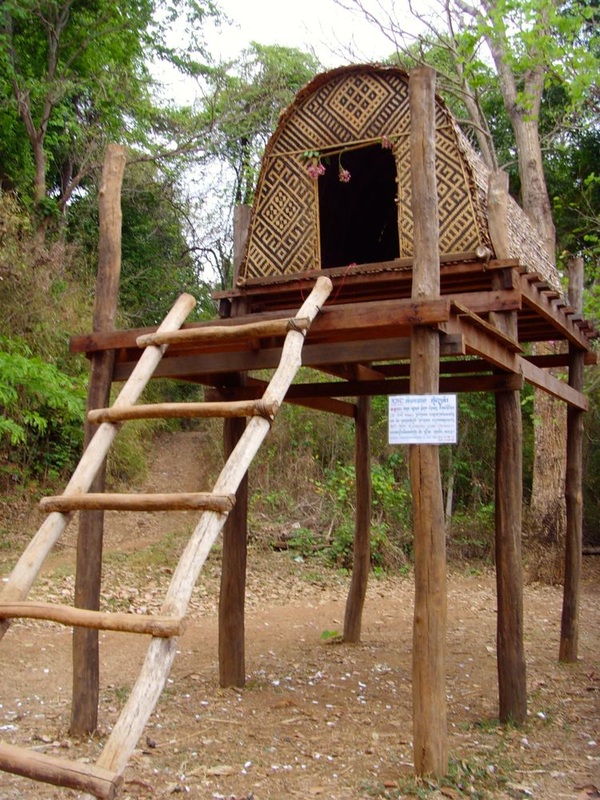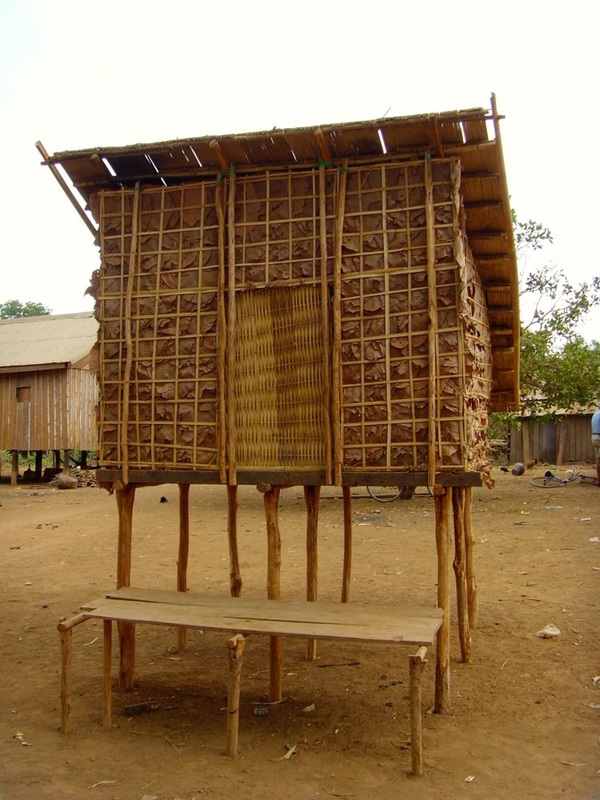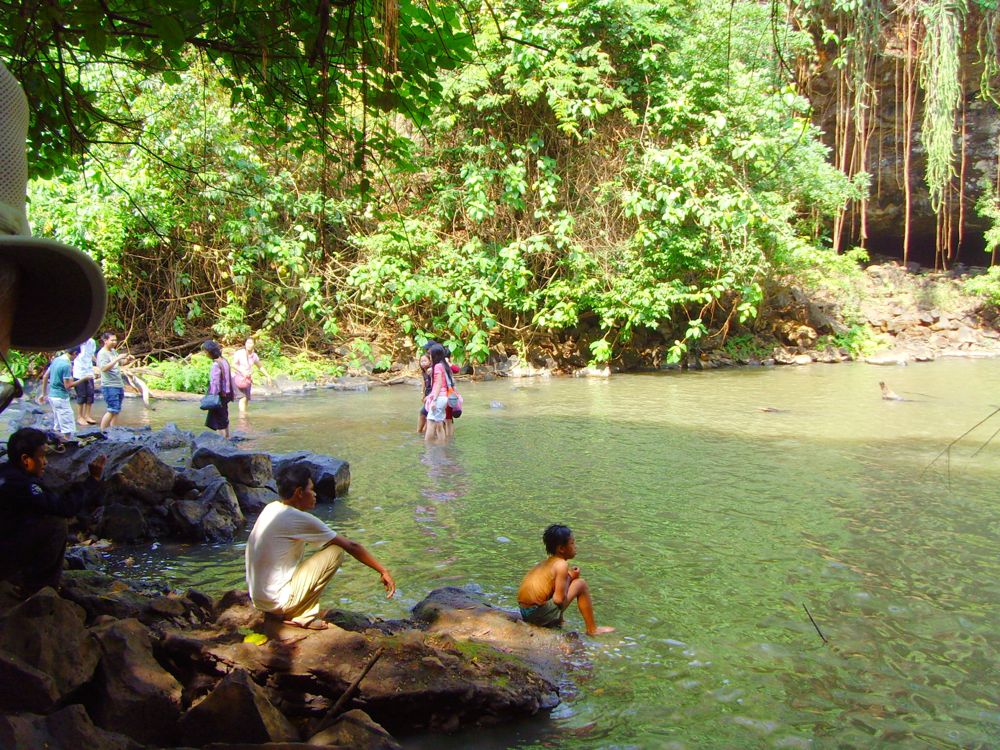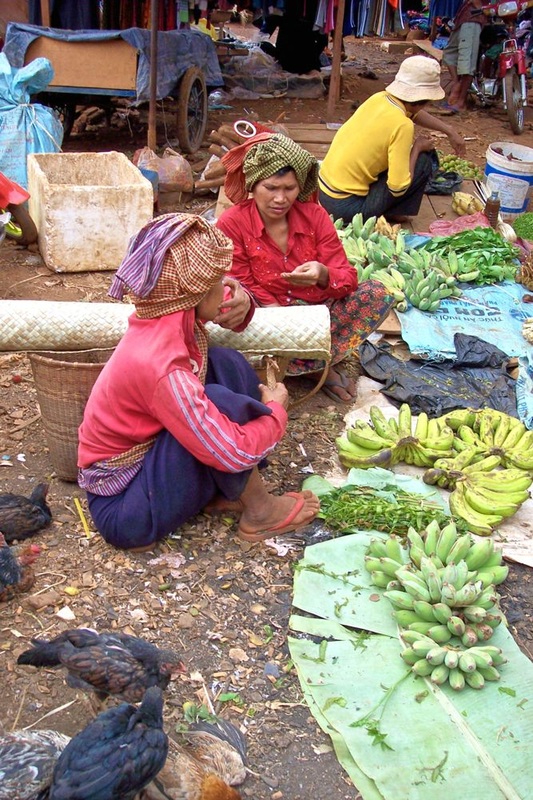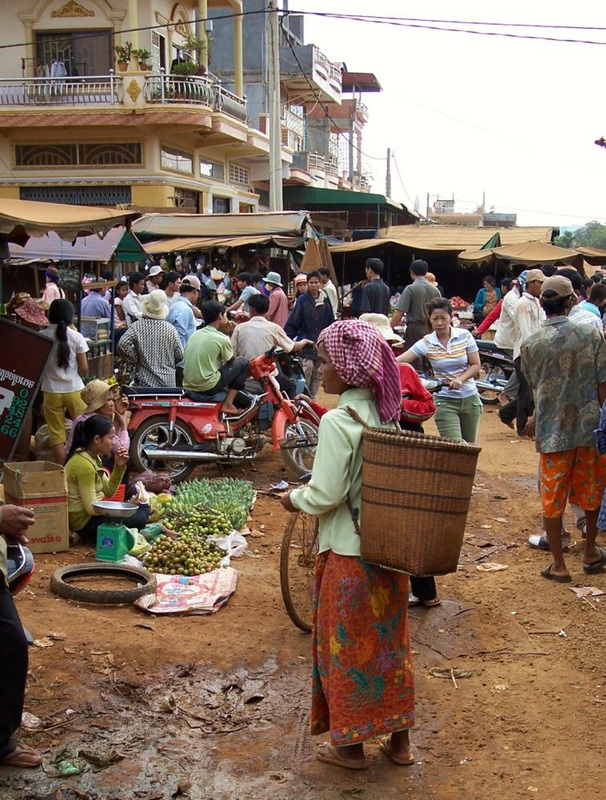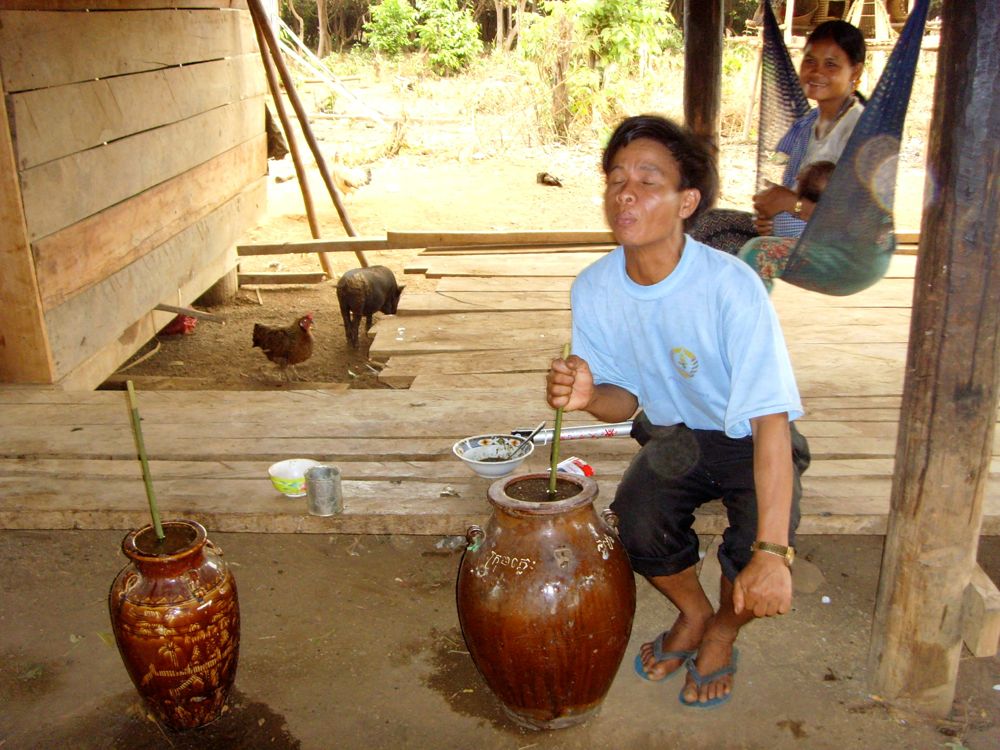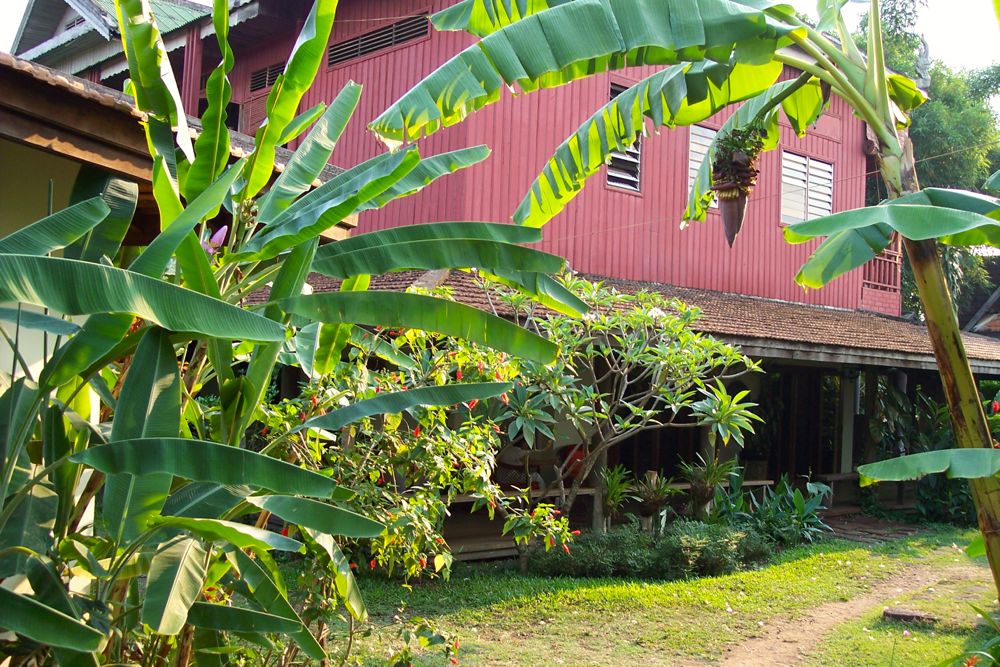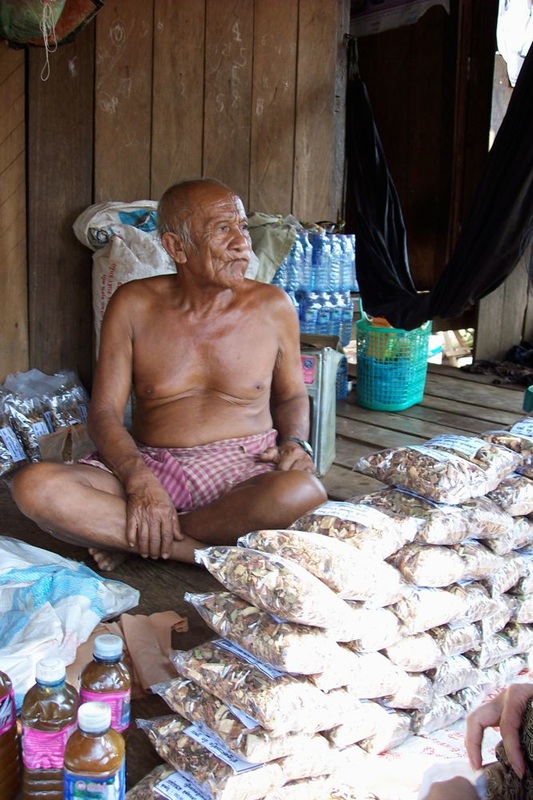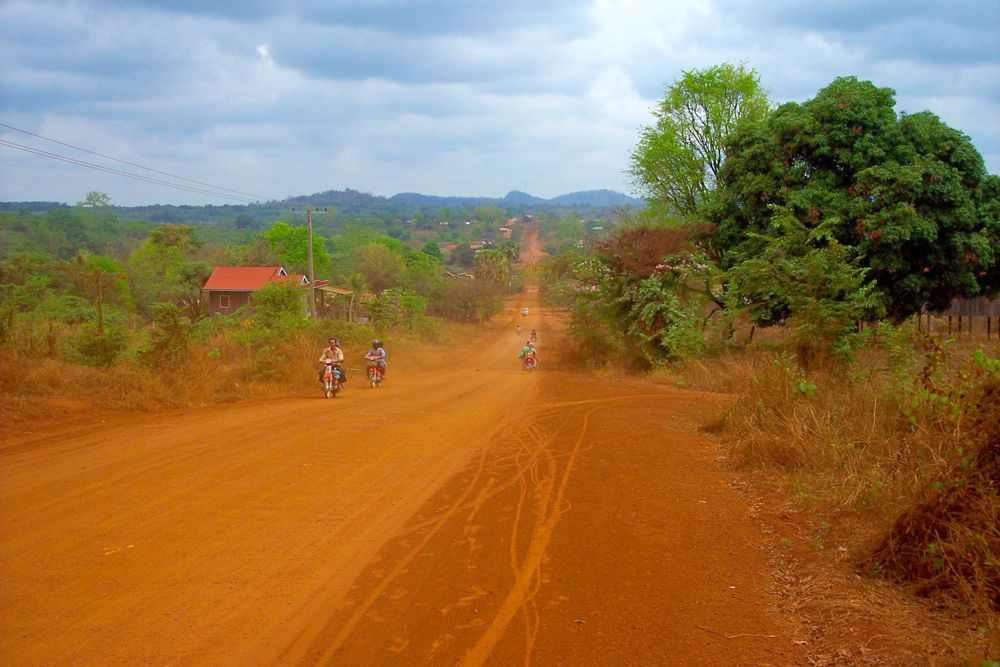Things to Know Before Visiting Ratanakiri
Cambodia
Ratana and Kiri. Ratana in Khmer means gem and Kiri, mountain. These are the two features for which Ratanakiri, this remote province of Cambodia, is best known.
Sparsely populated with around 125 456 people (2005), Ratanakiri is renowned for its unique natural beauty, rich natural resources, and exquisite landscapes, including its level plateau, undulating hills and mountains, crater lakes, watershed lowlands, waterfalls, and rivers.
Ratanakiri's Natural Beauty
Because of this natural beauty, two places have been designated as national protected parks: Lumphat Wildlife Sanctuary and Virachey National Park. Best of all, it's almost a secret. So, go quickly if this is your idea of beauty.
Because of this natural beauty, two places have been designated as national protected parks: Lumphat Wildlife Sanctuary and Virachey National Park. Best of all, it's almost a secret. So, go quickly if this is your idea of beauty.
Two rivers cross the province: Tonle San and Tonle Sre Pork, both abundant with fish. And around the rivers, Ratanakiri has one of Southeast Asia's most diverse forest ecosystems.
Its forest cover varies from area to area, from the dense, impenetrable jungle-like forests still rich in northeast wildlife to the drier and sparser forests in the southwest. Ratanakiri offers rich opportunities for Eco-tourism in Cambodia, and it is NOT spoiled.......yet.
Its forest cover varies from area to area, from the dense, impenetrable jungle-like forests still rich in northeast wildlife to the drier and sparser forests in the southwest. Ratanakiri offers rich opportunities for Eco-tourism in Cambodia, and it is NOT spoiled.......yet.
Banlung, Ratanakiri's Capital City
Even in the province's capital, Banlung, life is still simple. Farmers till the earth and work the rice paddies with hand tools. Villagers live in hand-built stilt wooden houses.
About 75% of the population is indigenous. Close-knit village communities gather around the fire at night and share a warm meal and homemade rice wine.
Living close to nature, they still practice animism with sorcery and black magic. This place is "Indochine" and a living peek at history.
Even in the province's capital, Banlung, life is still simple. Farmers till the earth and work the rice paddies with hand tools. Villagers live in hand-built stilt wooden houses.
About 75% of the population is indigenous. Close-knit village communities gather around the fire at night and share a warm meal and homemade rice wine.
Living close to nature, they still practice animism with sorcery and black magic. This place is "Indochine" and a living peek at history.
How to Get to Ratanakiri
Ratanakiri can now be reached by road in around 10-12 hours if you have your transport. It is better to take it on two legs, though, with a stop in Kratie to watch the rare freshwater dolphins. Kratie is a great town and well worth a walkabout.
Public transport includes a stop in Stung Treng: Phnom Penh to Stung Treng and then Stung Treng to Banlung. Again, pay for two seats for yourself so you get some space. Otherwise, the ride is more of an adventure that you might not care to have.
Also, do not bring anything white. This is a red-dust province. Wearing white will be a disaster.
The number of young Europeans trekking up here is remarkable as it is close to Lao. The trekkers link up quickly and are a spectacle on their own.
You can take the border crossing from Laos, Voeung Kam, Laos/Dom Kralor, Cambodia. Cambodian visas are available at this crossing. From Dom Kralor, take a taxi or bus to Stung Treng and then take another taxi or bus from Stung Treng to Ratanakiri.
Ratanakiri can now be reached by road in around 10-12 hours if you have your transport. It is better to take it on two legs, though, with a stop in Kratie to watch the rare freshwater dolphins. Kratie is a great town and well worth a walkabout.
Public transport includes a stop in Stung Treng: Phnom Penh to Stung Treng and then Stung Treng to Banlung. Again, pay for two seats for yourself so you get some space. Otherwise, the ride is more of an adventure that you might not care to have.
Also, do not bring anything white. This is a red-dust province. Wearing white will be a disaster.
The number of young Europeans trekking up here is remarkable as it is close to Lao. The trekkers link up quickly and are a spectacle on their own.
You can take the border crossing from Laos, Voeung Kam, Laos/Dom Kralor, Cambodia. Cambodian visas are available at this crossing. From Dom Kralor, take a taxi or bus to Stung Treng and then take another taxi or bus from Stung Treng to Ratanakiri.
Things to Do in Ratanakiri
1. Visit Ratanakiri's Yeak Laom Volcanic Lake
The earth's calm will envelop you as you approach Yeak Laom Volcanic Lake. It is a 700,000-year-old volcanic crater lake in a lush, peaceful jungle.
The area around has been declared the Yeak Laom Commune Protected Area. Many of the Khmer Loeu people consider the lake and the site sacred. They are steeped in local myth and legend, so be respectful once again. If you drop trash, local spirits will gather it together and magically send it home to your mother with a stern letter.
The lake is 800 meters in diameter and 47 meters deep. A 2.5 km hiking trail surrounds it. Around the lake are the five villages of Lapoe, Lon, Sil, Chree, and Phnom, home to the Tampuan minority group.
Members of this minority group formed the Yeak Laom Arts Group, dedicated to preserving their music, dance, and culture. They plan to record on CD aspects of Tampuan life: child rearing, pounding rice, religious offerings, caring for their buffaloes, and death rituals. If you are lucky, they may share some of these with you.
The Yeak Laom Cultural and Environmental Center displays Khmer Loeu handicrafts and hand-woven fabrics on the lake trail. Take pictures (after asking) of the artisans making these artifacts, as this will add life to your stories when you get home.
Have a swim and a picnic. It is very calm in the area. You can rest your weary self.
1. Visit Ratanakiri's Yeak Laom Volcanic Lake
The earth's calm will envelop you as you approach Yeak Laom Volcanic Lake. It is a 700,000-year-old volcanic crater lake in a lush, peaceful jungle.
The area around has been declared the Yeak Laom Commune Protected Area. Many of the Khmer Loeu people consider the lake and the site sacred. They are steeped in local myth and legend, so be respectful once again. If you drop trash, local spirits will gather it together and magically send it home to your mother with a stern letter.
The lake is 800 meters in diameter and 47 meters deep. A 2.5 km hiking trail surrounds it. Around the lake are the five villages of Lapoe, Lon, Sil, Chree, and Phnom, home to the Tampuan minority group.
Members of this minority group formed the Yeak Laom Arts Group, dedicated to preserving their music, dance, and culture. They plan to record on CD aspects of Tampuan life: child rearing, pounding rice, religious offerings, caring for their buffaloes, and death rituals. If you are lucky, they may share some of these with you.
The Yeak Laom Cultural and Environmental Center displays Khmer Loeu handicrafts and hand-woven fabrics on the lake trail. Take pictures (after asking) of the artisans making these artifacts, as this will add life to your stories when you get home.
Have a swim and a picnic. It is very calm in the area. You can rest your weary self.
2. Trek Ratanakiri's Virachey National Park
Virachey National Park, 37 km northeast of Banlung, bordering Laos and Vietnam, is a heavily jungled and mountainous area and has not been thoroughly explored. To trek here, get an experienced local guide. One thing you do NOT want to discover is a leftover mine!
Covering an area of 3,325 square kilometers, Virachey National Park is the largest protected Park in the region. You can trek the Park or go by boat.
You can also stay overnight with the tribes or community guesthouses. While you can enjoy its biodiversity, including hundred-year-old trees, hornbills, and woodpeckers, and the life of its ethnic minorities, the devastation left by previous conflicts will also confront you.
Make sure to get good recommendations from former trekkers or your hotel. Some of these guided treks only touch the outskirts of the Park, so make sure you have clear expectations for your guide of what you want to see and experience.
Trekking is an enjoyable activity in Ratanakiri, especially in the Park. You have to do this with a guide as there are still land mines in the area.
Virachey National Park, 37 km northeast of Banlung, bordering Laos and Vietnam, is a heavily jungled and mountainous area and has not been thoroughly explored. To trek here, get an experienced local guide. One thing you do NOT want to discover is a leftover mine!
Covering an area of 3,325 square kilometers, Virachey National Park is the largest protected Park in the region. You can trek the Park or go by boat.
You can also stay overnight with the tribes or community guesthouses. While you can enjoy its biodiversity, including hundred-year-old trees, hornbills, and woodpeckers, and the life of its ethnic minorities, the devastation left by previous conflicts will also confront you.
Make sure to get good recommendations from former trekkers or your hotel. Some of these guided treks only touch the outskirts of the Park, so make sure you have clear expectations for your guide of what you want to see and experience.
Trekking is an enjoyable activity in Ratanakiri, especially in the Park. You have to do this with a guide as there are still land mines in the area.
3. Visit some of Ratanakiri Minorities
It is interesting to visit more than one tribal village to see the distinct characteristics of the various Khmer Loeu minorities. Ratanakiri is home to about 60,000 ethnic minorities, including the Tampuan, Krueng, Charay, Prov Kachak, Kavet, Lao, Loun, Phnon, and Brou.
Each group retains its unique culture, tradition, belief, and language. Visit Tampuan and Charay villages to see their distinctive cemetery totems and long houses. Visit Krueng villages to see their traditional farming techniques and distinct high dwellings.
It is interesting to visit more than one tribal village to see the distinct characteristics of the various Khmer Loeu minorities. Ratanakiri is home to about 60,000 ethnic minorities, including the Tampuan, Krueng, Charay, Prov Kachak, Kavet, Lao, Loun, Phnon, and Brou.
Each group retains its unique culture, tradition, belief, and language. Visit Tampuan and Charay villages to see their distinctive cemetery totems and long houses. Visit Krueng villages to see their traditional farming techniques and distinct high dwellings.
Most of these minorities live very simply without the modern amenities we are used to. They use gas lamps and do not have radio, television, electricity, running water, or computers.
They grow cashews, sesame, and vegetables. Their meals are straightforward, primarily vegetables with the occasional meat when they can go to the market.
They grow cashews, sesame, and vegetables. Their meals are straightforward, primarily vegetables with the occasional meat when they can go to the market.
Many parents encourage their children to go to school; some hope to have a university education. One student in Grade 11 from the Tampuan tribe works as a moto driver to support himself in school. Another girl supports herself by working as a neighbor's maid, but she is determined to continue her studies up to university even if her family tries to stop her.
Many in these groups do not bring their sick to hospitals as these are far from their villages, so many die at an early age, and often, these deaths are attributed not to physical but spiritual causes such as displeasing the community spirits.
Remember...these folks are NOT objects. They have the same feelings, aspirations, and dreams as you have. Reach out. They are often welcoming.
If you want to take a picture, ask. Smile and say hello. Buy some bananas, jackfruit, or other fruits to take with you back to the hotel. Don't be loud, and don't point at people...that is especially rude!
Many in these groups do not bring their sick to hospitals as these are far from their villages, so many die at an early age, and often, these deaths are attributed not to physical but spiritual causes such as displeasing the community spirits.
Remember...these folks are NOT objects. They have the same feelings, aspirations, and dreams as you have. Reach out. They are often welcoming.
If you want to take a picture, ask. Smile and say hello. Buy some bananas, jackfruit, or other fruits to take with you back to the hotel. Don't be loud, and don't point at people...that is especially rude!
4. Go and Swim in the Waterfalls
Ratanakiri has several waterfalls, all worth visiting.
The best time to enjoy the falls is during the rainy season when there is a tremendous volume of water. Don't miss these:
Ratanakiri has several waterfalls, all worth visiting.
The best time to enjoy the falls is during the rainy season when there is a tremendous volume of water. Don't miss these:
- Cha Ong: 18-meter waterfall in the jungle where the rock behind the falls has been carved out by the action of the water, making it possible to walk behind the falls
- Kan Chang: a wide 7-meter tall fall with a pool at the base big enough for a good swim.
- Ka Tieng: a 10-meter fall set in the jungle.
5. Go Early to Phsar Banlung in the capital city of Ratanakiri
Many Khmer Lou comes here in their traditional backstrap baskets to sell fruits, vegetables, and other forest products, including smoked wild meat. You become the strange object, with everyone watching you...but if you smile, everyone will smile back, and your little area will light up like a Christmas tree.
Many Khmer Lou comes here in their traditional backstrap baskets to sell fruits, vegetables, and other forest products, including smoked wild meat. You become the strange object, with everyone watching you...but if you smile, everyone will smile back, and your little area will light up like a Christmas tree.
6. Visit the Lumphat Wildlife Sanctuary
This place is worth a visit. It is about 2,225 square kilometers of nature, with the Sre Pork River, waterfalls, and a mix of hills and forests. This sanctuary provides shelter for elephants, bantengs, tigers, wild buffaloes, bears, and over a hundred bird species.
It is also the home of many ethnic minorities, mainly the Phnongs, who live from the resins, vines, rattan, and other plants in the forest. The Phnongs rent elephants and ox carts for those who may hesitate to walk in the woods. We rented our elephants from them when we came to visit.
This place is worth a visit. It is about 2,225 square kilometers of nature, with the Sre Pork River, waterfalls, and a mix of hills and forests. This sanctuary provides shelter for elephants, bantengs, tigers, wild buffaloes, bears, and over a hundred bird species.
It is also the home of many ethnic minorities, mainly the Phnongs, who live from the resins, vines, rattan, and other plants in the forest. The Phnongs rent elephants and ox carts for those who may hesitate to walk in the woods. We rented our elephants from them when we came to visit.
7. Visit a Gem Mine in Ratanakiri
About 36 km from the capital, Banlung, one can see in the Bokeo Mines miners extract zircon from shallow tunnels. These are the cut and sold in the shops in Banlung.
About 36 km from the capital, Banlung, one can see in the Bokeo Mines miners extract zircon from shallow tunnels. These are the cut and sold in the shops in Banlung.
8. Interested in Sorcery or Black Magic?
Ratanakiri is the place to go. I was shocked to read an article in the Cambodia Daily about 64-year-old Sev Phem from O'Yadaw district in Ratanakiri, who is currently in deep trouble about the Pak Touch Village accusation that he is a sorcerer. In the Jarai tribe to which he belongs, this only means death or expulsion from the community where he has spent his lifetime with his nine children and grandchildren he could not keep track of.
All Sev Pehm wants is the chance to prove he is not, but the village people will not accept his challenge as they say he can overpower them using black magic. Several families have already moved out because of similar accusations. Others were killed.
As many people in this remote area still believe in animism, the problem is still acute. Some enlightened villagers hope that with education and young people's exposure to new developments, this problem will disappear.
Ratanakiri is the place to go. I was shocked to read an article in the Cambodia Daily about 64-year-old Sev Phem from O'Yadaw district in Ratanakiri, who is currently in deep trouble about the Pak Touch Village accusation that he is a sorcerer. In the Jarai tribe to which he belongs, this only means death or expulsion from the community where he has spent his lifetime with his nine children and grandchildren he could not keep track of.
All Sev Pehm wants is the chance to prove he is not, but the village people will not accept his challenge as they say he can overpower them using black magic. Several families have already moved out because of similar accusations. Others were killed.
As many people in this remote area still believe in animism, the problem is still acute. Some enlightened villagers hope that with education and young people's exposure to new developments, this problem will disappear.
A Short History of Ratanakiri
Modernization has been slow. The Province is situated 636 km from Phnom Penh in the Northeast. A border province, it has Laos PDR to the north and Vietnam to the east.
Ratanakiri became a province in 1959 as part of King Norodom Sihanouk's modernization campaign in the northeast of Cambodia.
Whatever development took place then brought a mix of blessing and curses and only led to feelings of resentment on the part of the Khmer Lou minorities many of whom were forced to work in newly developed rubber plantations.
The ascendant Khmer Rouge at that time exploited this resentment and forged an alliance with the Khmer Lou making Ratanakiri the Khmer Rouge headquarters in 1966. At around this time, North Vietnamese communists had also been active in this area so the province was targeted by the US bombing campaign to get rid of North Vietnamese sanctuaries.
Modernization has been slow. The Province is situated 636 km from Phnom Penh in the Northeast. A border province, it has Laos PDR to the north and Vietnam to the east.
Ratanakiri became a province in 1959 as part of King Norodom Sihanouk's modernization campaign in the northeast of Cambodia.
Whatever development took place then brought a mix of blessing and curses and only led to feelings of resentment on the part of the Khmer Lou minorities many of whom were forced to work in newly developed rubber plantations.
The ascendant Khmer Rouge at that time exploited this resentment and forged an alliance with the Khmer Lou making Ratanakiri the Khmer Rouge headquarters in 1966. At around this time, North Vietnamese communists had also been active in this area so the province was targeted by the US bombing campaign to get rid of North Vietnamese sanctuaries.
Where to Stay in Ratanakiri
Located on the lakeside of Banlung, the capital city, Terres Rouges Lodge is a remarkable and charming wooden structure in the middle of a beautiful garden with rooms tastefully decorated.
This is Ratanakiri's finest accommodation. Its restaurant, Le Jovial Jarai, has a full bar and serves both Cambodian and French dishes, often, with a local twist. Both French and English are spoken here and the lodge has a boutique with local handicrafts that are reasonably priced and often unique.
There are other options, too, often a bit cheaper. Check out Norden House just five minutes from Yak Lom crater, this Swedish owned retreat has currently six bungalows and can do up a very good Western meal for you.
Other choices include Lakeside Chheng Lok Hotel, Sovann Kiri Hotel, Mountain Guesthouse, Ratanak Hotel, Tribal Hotel and Yaklom Hill Lodge. But remember, you'll be counting on the hotel to help you set up a few day expeditions...so pick a good lodge. The purpose of the visit is not rest, it's participation!
Located on the lakeside of Banlung, the capital city, Terres Rouges Lodge is a remarkable and charming wooden structure in the middle of a beautiful garden with rooms tastefully decorated.
This is Ratanakiri's finest accommodation. Its restaurant, Le Jovial Jarai, has a full bar and serves both Cambodian and French dishes, often, with a local twist. Both French and English are spoken here and the lodge has a boutique with local handicrafts that are reasonably priced and often unique.
There are other options, too, often a bit cheaper. Check out Norden House just five minutes from Yak Lom crater, this Swedish owned retreat has currently six bungalows and can do up a very good Western meal for you.
Other choices include Lakeside Chheng Lok Hotel, Sovann Kiri Hotel, Mountain Guesthouse, Ratanak Hotel, Tribal Hotel and Yaklom Hill Lodge. But remember, you'll be counting on the hotel to help you set up a few day expeditions...so pick a good lodge. The purpose of the visit is not rest, it's participation!
Some Good Buys in Ratanakiri
About 36 kms from the capital, Banlung, one can see in the Bokeo Mines, miners extract zircon from shallow tunnels. These are the cut and sold in the shops in Banlung.
Look for authentic Khmer Loeu handicrafts and artifacts. Many of their handicrafts like back-strap baskets, hand woven fabrics, gourd vessels, and gongs are mostly still made for use by the local people.
Semi-precious gems mined in Ratanakiri such as amethyst, blue zircon, peridot and obsidian are cut and polished in Banlung. Several gem cutting/retail shops sell these gems unset. You can watch them cut these gems using primitive equipment. This is interesting as you can no longer see this in many cities.
Aside from these, being a deeply forested area, locals gather many of the products, organic and natural such as honey and also herbs with healing attributes based on age-old knowledge.
About 36 kms from the capital, Banlung, one can see in the Bokeo Mines, miners extract zircon from shallow tunnels. These are the cut and sold in the shops in Banlung.
Look for authentic Khmer Loeu handicrafts and artifacts. Many of their handicrafts like back-strap baskets, hand woven fabrics, gourd vessels, and gongs are mostly still made for use by the local people.
Semi-precious gems mined in Ratanakiri such as amethyst, blue zircon, peridot and obsidian are cut and polished in Banlung. Several gem cutting/retail shops sell these gems unset. You can watch them cut these gems using primitive equipment. This is interesting as you can no longer see this in many cities.
Aside from these, being a deeply forested area, locals gather many of the products, organic and natural such as honey and also herbs with healing attributes based on age-old knowledge.
Latest Challenges in Ratanakiri
Ratanakiri is now experiencing a boom with rubber plantations encroaching on many of its jungles. It is common to see felled trees and clearing when you go around as well as established rubber plantations and those only beginning.
I understand that people have to live and appreciate that the government has protected an area in Ratanakiri which is one of the largest areas in the region. Still, illegal logging continues to be a problem not just from the Cambodians but also from the Vietnamese who are lured by expensive timber available in Ratanakiri.
Recently, more than 50 ethnic minorities protested that about 500 hectares of their farmland had been seized. As many of the ethnic minorities practice rotational farming, they still don't have a concept of land ownership. Many of them find themselves without their land as city dwellers with better knowledge and resources claim what they thought they owned.
Development has its cost and many in remote places like Ratanakiri will have to face its own challenge.
Ratanakiri is now experiencing a boom with rubber plantations encroaching on many of its jungles. It is common to see felled trees and clearing when you go around as well as established rubber plantations and those only beginning.
I understand that people have to live and appreciate that the government has protected an area in Ratanakiri which is one of the largest areas in the region. Still, illegal logging continues to be a problem not just from the Cambodians but also from the Vietnamese who are lured by expensive timber available in Ratanakiri.
Recently, more than 50 ethnic minorities protested that about 500 hectares of their farmland had been seized. As many of the ethnic minorities practice rotational farming, they still don't have a concept of land ownership. Many of them find themselves without their land as city dwellers with better knowledge and resources claim what they thought they owned.
Development has its cost and many in remote places like Ratanakiri will have to face its own challenge.
Key Facts about Ratanakiri:
Country: Cambodia
Established as a Province: 1959
Capital: Banlung
Area: 10,782 sq.kms. (4,163 sq. mi.)
Distance form Phnom Penh: 636 kms.
Population: 125,456 (2005); 75% are indigenous
Country: Cambodia
Established as a Province: 1959
Capital: Banlung
Area: 10,782 sq.kms. (4,163 sq. mi.)
Distance form Phnom Penh: 636 kms.
Population: 125,456 (2005); 75% are indigenous
Have you been to Ratanakiri? What did you enjoy the most? Before you leave, let your friends know more about Ratanakiri by sharing this in your favourite social media.
